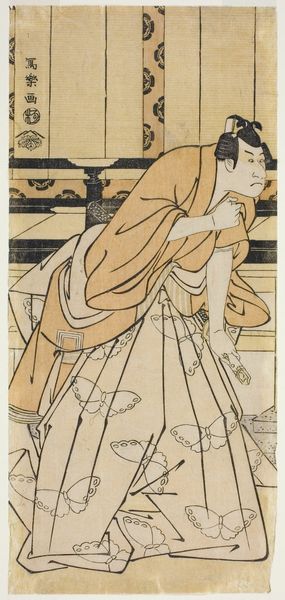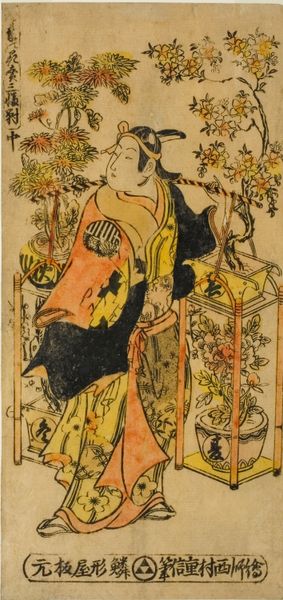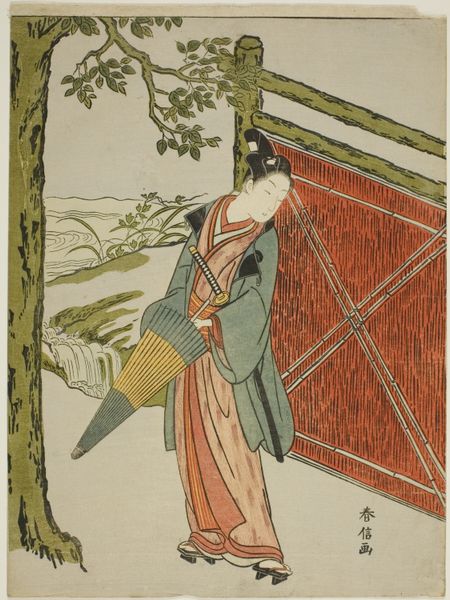
Young Man Knocking on a Gate in Snow as a Mitate of the Kabuki Play Women's Version of -Potted Tree- c. 1774
0:00
0:00
print, ink, woodblock-print
#
portrait
# print
#
ukiyo-e
#
japan
#
ink
#
woodblock-print
#
genre-painting
#
erotic-art
Dimensions: 15 3/16 × 4 5/8 in. (38.6 × 11.7 cm) (image, sheet, hashira-e)
Copyright: Public Domain
Editor: This is "Young Man Knocking on a Gate in Snow as a Mitate of the Kabuki Play Women's Version of -Potted Tree-", a woodblock print with ink, dating from around 1774 by Isoda Koryūsai. I find the figure very striking against the stark, snowy backdrop. What is your take on this print? Curator: This ukiyo-e print gives us a fascinating glimpse into the Edo period's complex relationship with art and theatre. Notice the "mitate" element in the title; this signifies a parody or an allusion. The artist cleverly references a popular Kabuki play through this image of a young man. Consider how Kabuki, though popular, faced restrictions. Prints like these became a way to engage with that popular culture in a more permissible way. Editor: So the print is a commentary, using the man to sort of stand in for the drama? How would the viewers back then have interpreted that? Curator: Exactly! The audience of these prints were very familiar with Kabuki conventions. This print alludes to class tensions by using a ‘young man’ with symbolic gestures, who probably came from a privileged societal background to knock at a geisha house door. Prints like this highlight social mobility. Would you say, in your eyes, that the artist is judging these themes, or documenting them? Editor: That’s interesting… It’s hard to say. I suppose he's observing a cultural phenomenon through this lens. Maybe without judgement but adding some playful artistic license. Curator: Precisely. The value here is its social documentation of Kabuki's importance. It invites questions about gender roles. It captures a slice of Edo period life and its entanglement with popular entertainment and shifting social mores. Editor: I learned a lot about Kabuki theatre's relationship to visual culture. The idea of it acting as social commentary and blending so perfectly with Ukiyo-e sensibilities is so thought-provoking! Curator: And the social conditions shaping artistic production in that period; art, theater, politics—all intertwined! It's a powerful lesson in contextualizing art within its history.
Comments
No comments
Be the first to comment and join the conversation on the ultimate creative platform.













